Most Popular Blogs
All posts
Forays into Forest Bathing: Exploring Nature One Tree at a Time

Forest bathing, or shinrin-yoku, is a Japanese nature therapy practice to help individuals develop strong connections with nature and reap the physical and emotional benefits that this connection provides. Although its roots are far older, the modern understanding of this practice began in 1982 when the Japanese Ministry of Agriculture, Forestry and Fisheries instituted a national forest bathing program. Now gaining traction internationally, forest bathing is a tool that many are beginning to explore. Read on to learn about one member’s experiences, and steps you can take to begin your own forest bathing journey. Read more…
New Youth Gear Library Opens Outdoors for Broader Community

Thanks to support from hundreds of people and partners, we're excited to launch our new Mountaineers Gear Lending Library and leader training programs. As we seek to continue to engage future Mountaineers, expand our youth programs, and promote diversity, equity, and inclusion in the outdoors, this resource will make the outdoors more accessible to all outdoor enthusiasts. Read more…
Balance and Coordination - One-leg deadlift

One of the most important exercises in my own outdoor-conditioning strength program, and indeed in the program of many hundreds of mountaineers I've trained over the past fifteen years, is the one-legged deadlift. Whether you are 8 or 88, you need balance, coordination, and strength. To go faster uphill on foot, include the one-legged deadlift in your program. It will help your glutes, quadriceps, hamstrings, and balancing muscles around the feet, ankles, hips and knees. Read more…
How To: Manage the Risks of River/Creek Crossings

As the weather gets warmer and winter snow melts away, more of us are heading outside. And as the snow melts, it leaves us with a sometimes a challenging obstacle: water. In the Cascades, it doesn't matter if you are a hiker, scrambler, or climber, eventually you'll have to deal with a water crossing. It could be a small trickle or a rushing river. It's not a matter of if, but when, you'll encounter this obstacle.
This article was updated in May 2018.
Historical Perspective
A few years ago, a Mountaineers group was headed to climb Sahale Peak. The team was crossing a small drainage in the area between Midas and Morning Star Creek - two of the main creeks that flow out of the Quien Sabe Glacier below Sahale - when one of the climbers slipped and hit her face on the rock in the creek. This caused a small laceration, just under the right eye, and swelling around the area, as well as a headache, slight dizziness, and swelling. The trip leader decided to cancel the climb and turn around at this time. The group headed back to the cars and the injured climber was taken to the hospital for medical evaluation. Luckily, she sustained no fractures or head injury, but she did have a nasty black eye.
This incident shows how something seemingly simple, like crossing a small trickle of water, can be detrimental to the success of a trip.
Avoiding Hazards
Many different hazards are involved in water crossings: slippery, moss covered rocks, swift currents, soggy boots, and cold feet. If you do fall in, you have soaked clothing and gear, the risk of hypothermia, potential projectiles in the water like logs and boulders, and much more.
Here are some tips to reduce your chances of ending up soaked and needing to cancel the rest of your trip:
- Never try to cross a major stream if you are alone. It only takes 2" of water to drown. The climber in the incident above could have easily been knocked unconscious, and if there was no one to help her up, it could have been a different outcome.
- Quickly search both upstream and downstream for a way to cross without having to ford the water. Look for downed logs, closely spaced stones and boulders, or narrow points in the waterway. Be sure to keep in mind the ability and experience levels of everyone in your group.
If you find possible logs or stepping stones, consider:
- Will it hold you? If you are considering a log, is it strong enough to hold your weight as you cross, or is it rotten and will break once you are half-way out? Is it wide enough to get good foot placements? Are there branches sticking up in your way? If you are considering stones, are they sturdy and solid, or are they going to shift under your weight and dump you in the water?
- What is the surface like? Does that log have rough, textured bark that will give you good traction, or is the bark peeled away showing damp, slick hardwood? If you are unsure of the footing, but the log seems strong enough, one alternative is to butt-scooch along the log. Are those stepping stones covered in slick moss, or do they have good texture?
- Be particularly cautious of log jams. They might seem like a solid option, but the logs can easily shift and throw you off balance and into the water. Now you are in even bigger danger of getting caught underwater by one of the logs.
Regardless of how you have to cross - whether it be logs, stepping stones, or just fording the water - take a minute to look downstream of your crossing point and examine the hazards you could encounter if you fall in. Is there a large waterfall you could get swept over? Maybe a downed tree or log jam that you could get caught in or some large boulders you could hit. If anything like this poses a danger, re-evaluate your crossing point.
Picking the best spot
If your only option is to ford the water, follow these steps:
- Look for the shallowest, slowest running section. This is usually also a wider section of the waterway.
- Assess the water's speed by tossing in sticks, leaves, or grass into the water. If there is debris actively floating down the water (evidence of flooding) or the sound of tumbling rocks can be heard underwater (evidence of fast-moving water), the crossing should be abandoned.
- Keep in mind the the physical stature of other people in your group. Two feet of water could be less than knee-deep if you are 6'6" tall. But it could be mid-thigh deep for someone under 5' tall, and that makes it much more challenging.
- Look at the bank on the other side. Avoid steep banks as this not only indicates a challenge exiting the water, but that steepness could continue dramatically down and create a deep hole with fast-moving water.
- If possible, plan to cross early in the morning. Many of the waterways in the Cascades are directly fed by snow-melt. After a cool night, there won't be as much melting and the water level will be lower. On the flipside, after a long, hot summer day (or even a warm spring rain) there will have been a lot of melting and all that water will be rushing through the streams at a higher overall level that afternoon, making them both deeper and faster flowing.
Staying Dry & Avoiding Injuries
Once you've chosen your place to ford the water, follow these tips to stay dry and avoid injuries:
- If you have sandals with an ankle strap (like Chacos or Tevas) change into those. Avoid flip-flops as the loose heels can get caught in the current and make you lose your balance.
- If you don't have alternate footwear, at least take your socks off and put your bare feet back in your boots. That way, you can put your dry socks back on after crossing and they can start to absorb some of that water in your boots.
- Do not cross in just your bare feet. Unknown hazards in the water, like sharp sticks, rocks, possibly even fishhooks, could injure you. Your bare feet are a poor substitute for the traction provided by the soles of your boots.
- Take off extra layers and pack them in the most water-proof thing you have. I always carry one or two extra heavy-duty trashbags in my pack. Take that warm puffy off and wrap it up the best you can. You'll want it once you get to the other side! Roll up your pant-legs, or ditch your pants altogether.
- Undo your waist-belt and sternum straps on your backpack and loosen your shoulder straps. If you do fall in, this will allow you to easily get your pack off.
Crossing Methods
- If you are crossing the water one at a time, use your trekking poles, ice axe, or downed tree limbs for stabilization.
- Cautiously enter the water and face upstream. If you only have one pole or limb to help you, hold it with both hands in front of you (upstream) to form a tripod with it and your legs. Lean on the pole as third leg as you shuffle-step across, keeping two points of contact at all times. If you have two poles or limbs, you can use the one in your leading hand to probe along the way and feel for submerged obstacles or hidden holes.
- Another method is to cross as a group using the "mutual support method." There are two options for this - in the first option, everyone should face upstream and hold on to the shoulders or backpack of the person in front of them (front person can have a pole or limb). As a group, shuffle step across the water, using each other for support and stability.
- Another option is for everyone to face the opposite bank and move together as a unit. In this method, keep the waist-belt of your backpack buckled. Insert your arms between your neighbors' back and their pack, and grab their waist-belt on the opposite hip. In both scenarios, the most upstream person should be strong, then the second person should be the strongest and/or most experienced. The person on the other end should also be strong, and then all other members sandwiched in the middle. End people can also have poles for extra stability. Don't break formation until everyone is out of the water.
Regardless of which method you use, don't fight the current or try to go straight across the water. Instead, with each step move diagonally downstream as you make your way across.
If you do fall in, try to stand back up as quick as possible before your backpack gets too waterlogged. If you are swept downstream, get out of your pack but try to keep hold of it and use it for flotation. Try to position yourself face up with your feet downstream of you. Only try to stand up once you can touch the bottom in shallow water. Editor's Note: Be aware of the dangers of foot entrapment anytime you stand up in moving water.
Once you've made it across, wring out your damp clothes and use a pack towel to dry off as much as you can. If available, switch into dry clothes. Put on an extra insulating layer to help keep in what little body heat you have. Pop a quick bite of food in your mouth and start hiking to generate some more warmth.
Take every water crossing seriously. Always ask yourself, "Do we need to cross? Where do we cross? How do we cross?" Even with all of these tips, be sure to keep in mind that if there is any doubt, not crossing at all is the best option.
How We're Reducing Our Carbon Footprint: Transportation

The Mountaineers made a commitment to reduce our organization’s carbon footprint as part of Vision 2022. In the Carbon Footprint Reduction Committee’s last blog post, we discussed the carbon footprint of food and what we can all do to make a difference. This month we’re excited to talk about another area where The Mountaineers, and most of us, can reduce our carbon footprint: transportation. Read more…
Remembering Mountaineer Ann Nelson

With great sadness we share the news of the passing of Ann Nelson, an active 25-year member of The Mountaineers community. Ann was with other Mountaineers members on a private trip, completing a backpacking traverse from the Necklace Valley to the West Foss River Valley in the Alpine Lakes Wilderness on Sunday, August 4, 2019, when she lost her footing on loose rock. She did not survive the injuries sustained in the fall. Read more…
How To: Prepare for an Overnight Trip

In my last post, I discussed how to take care of your sleeping bag. I received many good questions. Thanks for taking the time to write me! One reoccurring question was about my method for storing a sleeping bag when backpacking. As promised, I will talk about that as well as other tips and tricks for preparing for an overnight trip in any season. Read more…
Membership - Special Olympia Offer

If you're ready to join a community that gets you outside and take your outdoor adventures to the next level, now is a great time to join The Mountaineers! Read more…
Happy 94th Birthday, Fred Beckey!

Fred Beckey, a living legend among Northwest Mountaineers, is a climber, environmentalist, historian, and author. He is recognized as one the most imaginative, persistent, and thorough explorer and mountain investigator of the Cascade Range Wilderness. Read more…
10 Essential Questions: Jenn Carter
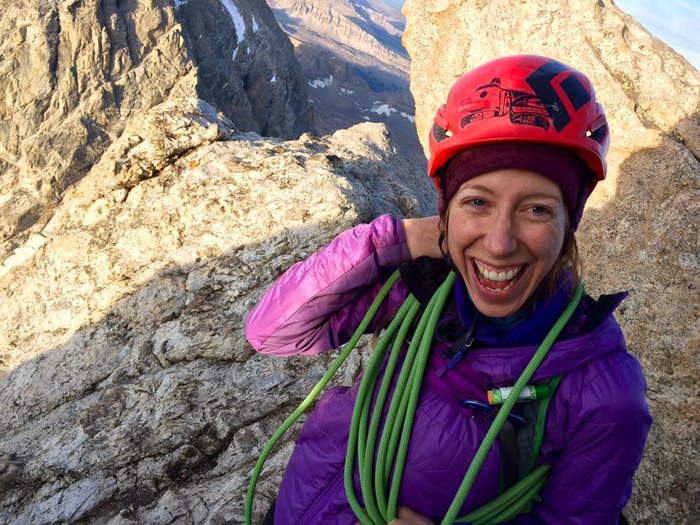
Each week we bring you a personal story from one of our members. For our member profile this week we talked to .... Read more…
10 Essential Questions: Amrit Panda
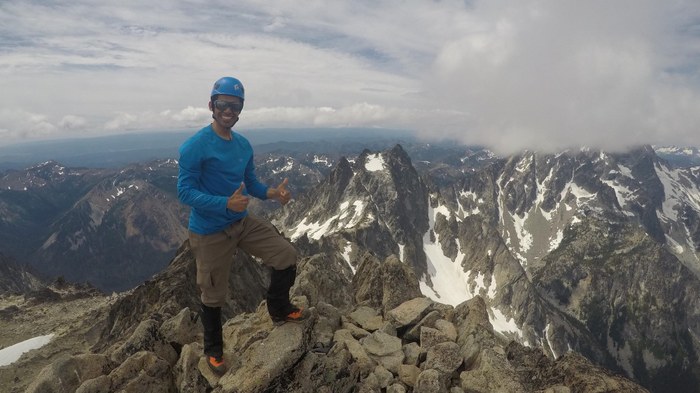
Each week we bring you a personal story from one of our members. For our member profile this week we talked to .... Read more…
Walking to the End of the World

The following is excerpted from Walking to the End of the World: A Thousand Miles on the Camino De Santiago, Beth Jusino.
I climbed the narrow stairs to the upper level of the train, my backpack strapped over my shoulders, a bag of sandwiches clutched in my hand, and my husband a few steps behind me. The car was empty as I settled into a forward-facing seat, feeling smug. Everything was going exactly as planned. Read more…
Starting off on Sea Kayaking
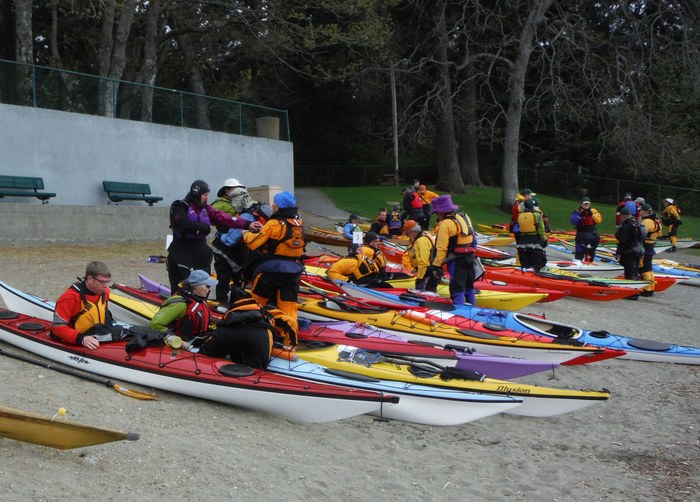
The Tacoma Mountaineers Basic Sea Kayak Course is scheduled for March 28 – April 19, 2015. This course is loaded with practical information, hands-on education, introduction to kayak gear and an emphasis on paddling safety. Read more…
Commonwealth Basin Snowshoe - The Fall Looked Minor

As Mountaineers, we are committed to learning from our experiences. We examine every incident that happens on a Mountaineers trip for opportunities to improve the ways we explore and teach. Our volunteer safety committee reviews every incident report and picks a few each month to share as examples of ‘Lessons Learned’. The trip report below describes what happened on this trip, in the leader’s own words, and outlines the lessons the leader has identified. In some cases, we offer additional key learnings from the incident. Read more…
2015 Volunteer Appreciation Dinner and Awards

Everything accomplished by The Mountaineers as an organization can be credited to the efforts of our volunteers. Our courses, trips, youth programs, and advocacy efforts are fueled by passionate people who are engaged because they want to be, not because they receive financial motivation. Each year we hold a Volunteer Appreciation Dinner to recognize these tireless individuals. Read more…
Impact Giving | The Mountaineers Goes Solar

Within five minutes of meeting Charlie and Carol Michel, it’s clear that they care very deeply about three things: sea kayaking, The Mountaineers, and our collective carbon footprint. Read more…
Foothills Volunteer Spotlight: Steve LeBrun

Each week we bring you a personal story from one of our members. For our member profile this week we talked to... Read more…
Trail Tails: Raven

Trail Tails is a special feature showcasing the mutts of The Mountaineers! This month we recognize Raven, owned by Mountaineer Carlanna Livingstone. Read more…
Opt To Act This Black Friday

Since 2015, REI has closed its stores on Black Friday, paying their employees to #OptOutside instead. At The Mountaineers, we couldn't love the idea more. Our employees have always enjoyed the day after Thanksgiving as a vacation day, and two paid stewardship days each year to take care of their favorite places to play. We believe going outside is not just good for your health - but good for your soul. Read more…
What's in a Name? Why We Use Equity & Inclusion (E&I)

Language is powerful. We use a string of characters or words to attempt to capture history, context, meaning, intent, and often, emotion. Language is subject to personal interpretation - most context-laden words rarely share the exact same meaning from one individual to the next. That’s what makes language imperfect. Read more…
How To: Implement Low-Impact Recreation Skills

At The Mountaineers, we've believe venturing into the outdoors is an essential piece of the human experience. It's important to implement low-impact recreation skills to keep our wild places as sanctuaries for the human spirit. Read more…
Remembering Mountaineer Pradnya Mohite
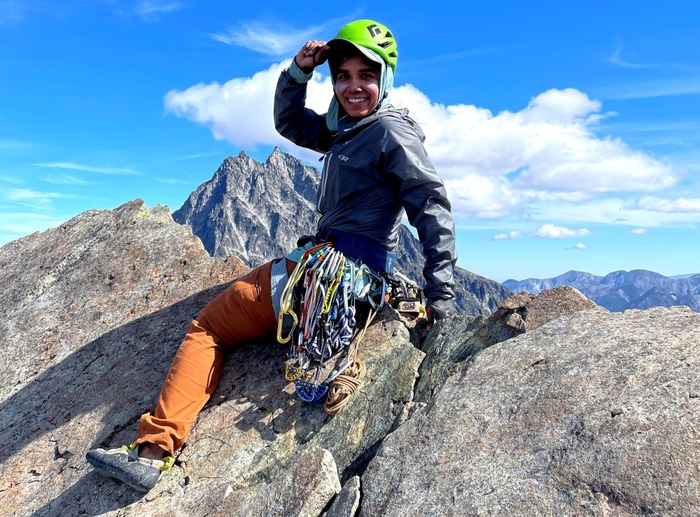
With great sadness we share the news of the passing of Pradnya Mohite, a beloved member of our Everett and Seattle climbing communities. On March 6, 2022, Pradnya was on a private climb of Mt. Hood with another Mountaineers member when they suffered a fall. The team was benighted, and Pradnya did not survive. Read more…
Public Input for Grizzly Bear Recovery Plan
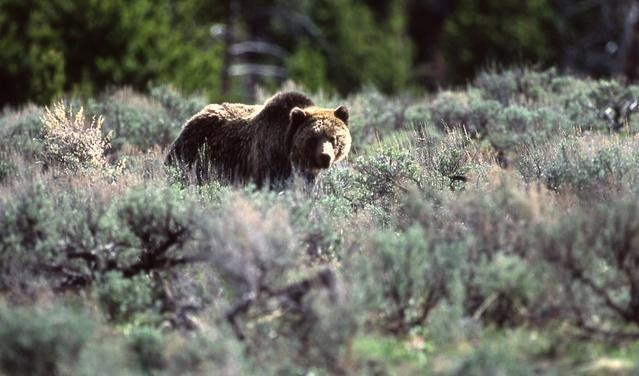
North Cascades National Park, considered the “wild nearby” for its incredible scenery and wildlife, is also at the center of an opportunity being led by the National Park Service, Washington Department of Fish and Wildlife (WDFW), U.S. Fish and Wildlife Service (USFWS) and U.S. Forest Service to restore a grizzly bear population. Read more…
Become a Youth Volunteer - Oct 13 Orientation & Dinner

Did you know that The Mountaineers has year-round outdoor adventure clubs for youth? At the Seattle branch, there are five different clubs broken up by age for youth ages 6 through 18: Pathfinders for 6-7 year olds; Nomads for 8-9 year olds; Explorers for 10-11 year olds; Junior MAC for 12-13 year olds; and MAC (Mountaineers Adventure Club) for 14-18 year olds. Read more…
Remembering Wolf Bauer (1912 - 2016)

The Mountaineers is deeply saddened by the loss of one our longest standing and most distinguished members: Wolf Bauer - pioneer, first-ascensionist, champion skier, sea kayak course and boat innovator, founder of Seattle Mountain Rescue Council, and esteemed conservationist. Wolf passed away on January 23rd, nearly one month shy of his 104th birthday. Read more…
An Unusual Decision When One Member of the Party Went Missing

I recently led a scramble of Seymour Peak. The group hiked from Chinook Pass to Dewey Lake and took a few minutes to rest, eat, and take pictures. We then proceeded to scramble up towards Seymour Peak. We’d been scrambling for about 30 minutes along a confusing maze of animal trails through open woods and had just entered the basin when one of our members realized that we were missing part of our party. Read more…
10 Essential Questions: Tom Vogl

Each week we bring you a personal story from one of our members. For our member profile this week we talked to .... Read more…
Conservation 101: What is Advocacy, and Why is it Important
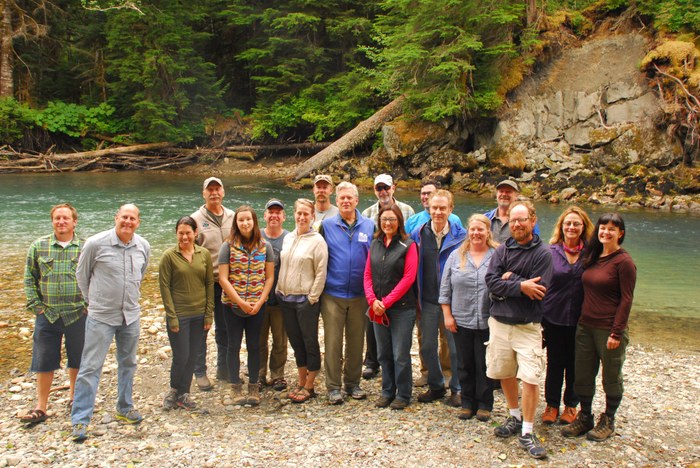
Conservation advocacy has been an enduring priority throughout The Mountaineers history. Early members recognized the importance of protecting wild places for the outdoor experience, and as a result we have been involved in nearly every major conservation campaign in our state's history. Advocacy has been, and remains, at the heart of key environmental protections. Read more…
Remembering Mountaineer Dee Molenaar

Dee Molenaar, an international mountaineering legend, Pacific Northwest hero, climber, geologist, and artist, passed away on Saturday, January 19, 2020. He was 101. A public memorial will be held on Sunday, October 10, 2021. Read more…
The Mountaineers and WTA Team Up To Make a Difference on Earth Day Weekend

It rained non-stop on the Wynoochee valley in the southern Olympics on Earth Day weekend, April 22-23, 2017, but that did nothing to dampen the spirits of 27 members of The Mountaineers who volunteered alongside four Washington Trail Association (WTA) crew leaders for the first trail maintenance stewardship project between the two organizations. Read more…